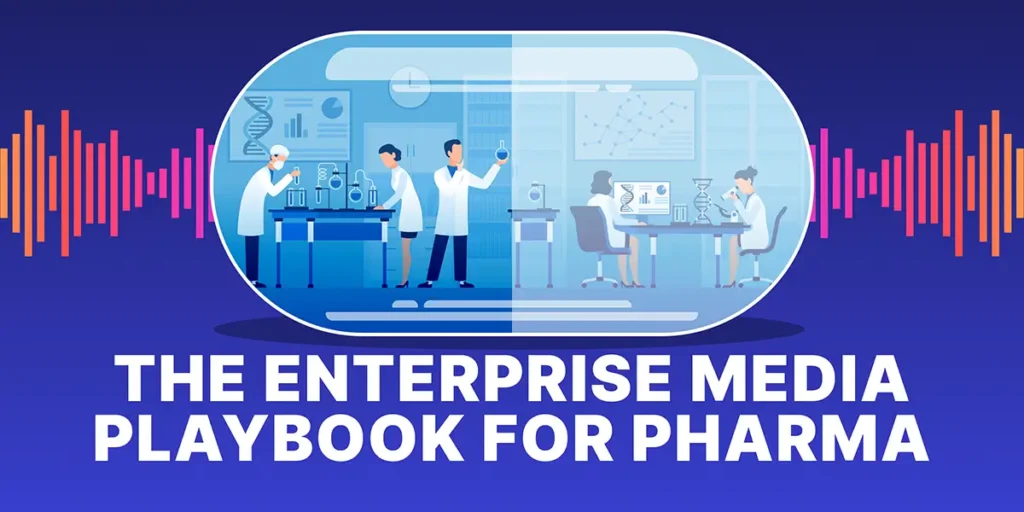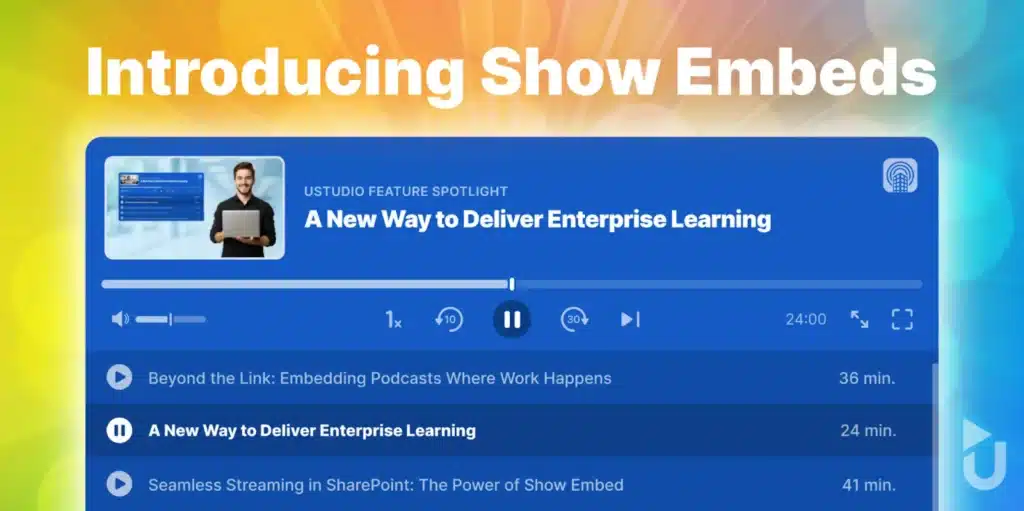What To Do When You’re Struggling To Create Private Podcast Content For Your Enterprise
uStudio Staff | Podcasting

As rewarding and fun as it is to create new episodes for your private podcast, it can be challenging to stay creatively inspired on a consistent basis. However for those who don’t think they have enough ideas to continually post new content to their private podcast - think again. While creating private podcast content can feel daunting at first, we have found that once you push through any initial concern, it can be quite simple and straightforward to deliver episodes your audience will get tremendous value from.
Check out the following tips and ideas if you’re struggling to create new private podcast content for your enterprise.
Use a programming worksheet.
Use a programming worksheet, like a podcast content calendar, when publishing multiple shows and episodes, to identify gaps in programming, or redundancies in topics, as well as schedule the appropriate cadence of new content. Taking note of your content’s purpose, audience, desired outcome, format, and more can help you to align your production team and brainstorm further ideas and messaging for private podcast shows and episodes.
Convert pre-existing assets into private podcasts.
From webinar and town hall recordings, to sales enablement collateral and blogs, there are many existing assets that would serve as great private podcast content and can easily be uploaded to uStudio’s Enterprise Podcast. Next time you are holding an important Zoom meeting or call, consider recording it and turning it into your next private podcast episode. Especially if you want to get new content published quickly, looking at what helpful business messages you have already produced is an easy way to begin.
Our customers at CCC found that uploading important webinar content to uStudio greatly increased their podcast program adoption. Although this isn’t considered “traditional” podcast material, it helped CCC employees get accustomed to logging in and out of the uStudio application to receive important information.
Create content to complement your existing initiatives.
Programming new podcast shows and episodes are a chinch. Take a look at the content you are already producing for other needs within the company and see if a new private podcast show or episode should complement this item. New podcasts can simply slot into your overall training or communications calendar, next to the content you are already producing to help expand your messaging reach, frequency or engagement.
Investigate company discussions and milestones.
Information moves at lightning speed and you want to make sure your remote employees have the most up-to-date information at hand. Skim your inbox, slack channels or company newsletters to see what the business is talking about. Consider new company trends, business updates and internal champions to potentially highlight in upcoming episodes.
Be sure to connect with leadership frequently to take note of the most common questions employees are asking. This is also an opportunity to gather information on recent sales deals that could be featured within new content. The more you investigate, the more ideas you will have for future private podcast content.
Take a look at consumer podcast trends.
If you are having trouble brainstorming new private podcast content, try to get inspiration from your favorite podcasts outside of work. What consumer podcast trends can translate to your professional corporate podcast? This can not only help brainstorm content but new private podcast segments as well. For example, one of uStudio’s Mid-Size Pharma customers frequently creates advertisements to promote departmental updates or reminders to help break up podcast content, which helps to keep their listeners engaged.
Consider a new private podcast format.
In many instances, there won’t be one type of podcast format but a variety that helps the organization realize its objectives. If you are having trouble brainstorming content for your private podcast, consider implementing a new format into your program. For example, a video podcast show could be a great idea to share whiteboard training, webinar recordings or real-world examples. In a talk show setting, there may be situations where you want the podcast hosts to be able to look the audience in the eye to further establish a relationship.
We also recommend recording podcast interviews to take a lesson or experience one step further. Interviews also offer a great opportunity to implement storytelling into your podcast content. Podcast show or segment ideas examples can include success stories from the field, getting to know the leadership team and more. Luckily, recording and producing remote interviews at home is easy with simple and inexpensive tools like SquadCast, Zencastr and riverside.fm.
Publish bite-size pieces of content.
Social media has trained us to consume information in small amounts, i.e. 140-character Twitter posts. Many of us today just do not have the attention span for lengthy content. Video and audio is an easy way to pack a lot of information into a short, compelling piece. And a private podcast show with multiple episodes allows you to break up a major concept into shorter features. Next time you are planning a new private podcast episode around a dense topic, consider breaking it up and turning it into a new podcast show instead.
Consider knowledge sharing and employee generated podcast content.
If you are struggling to create new private podcast content for your program, consider welcoming ideas from other employees within your company. With uStudio, businesses can encourage passionate employees to develop and test their own private podcasts quickly and inexpensively.
If other leaders or teams within your company are interested in managing their own podcast show, consider creating ground rules and having them submit their idea and/or episode briefs for consideration. For example, new show or channel submissions must be sent to the owner of your podcast program for consideration. They should clearly explain not only the purpose of the show but what exactly they are committing to in terms of cadence and how they plan to promote their content.
Constantly examine podcast analytics and survey your audience.
A great way to get new ideas and shape future content in your private podcast program is to constantly examine your podcast analytics to see what is already resonating well with your employees. Exposure to analytics will allow you to monitor the behavioral trends relating to how your workforce prefers to learn and get communications. For example, did a certain host or topic result in a surge in podcast usage and listenership? Employee preferences might change over time and analytics will help you to produce the best material that will keep your workforce listening time and time again.
At the end of the day, when it comes to producing new material for your podcast, don’t feel obligated to totally reinvent the content wheel. Getting started creating material for your private podcast is easy, especially when you take a step back and look at what you already have right in front of your eyes.


